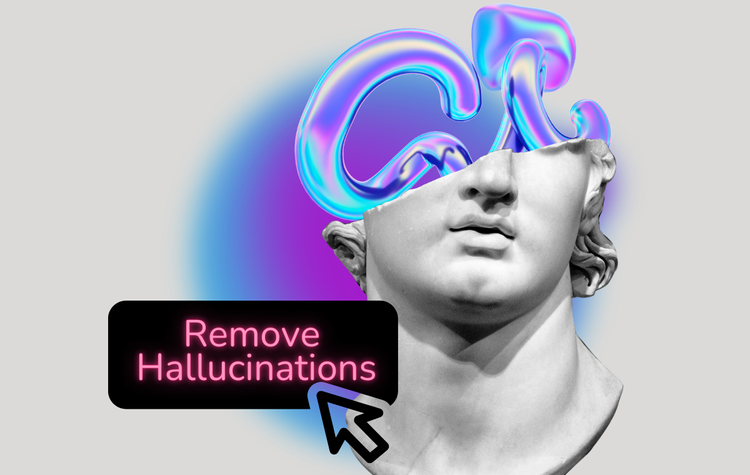Five Things You Need In an AI Chatbot: Buying Guide
The emergence of generative AI in customer support has been nothing short of transformative. The ability of these AI models to generate human-like responses has given businesses a powerful tool to enhance user experience and scale support operations.

The emergence of generative AI in customer support has been nothing short of transformative. The ability of these AI models to generate human-like responses has given businesses a powerful tool to enhance user experience and scale support operations.
However, for potential buyers, distinguishing between many AI chatbot applications might seem like a herculean task. Each claims superiority, making it crucial for organizations to discern the actual value and select the one that fits their unique requirements.
Maslov’s Hierarchy of Needs:
Maslov's Hierarchy of Needs is a psychological theory that explains human motivation based on ascending needs. When relating this to chatbots, it provides a structured framework to evaluate their capabilities.
Just as humans need to fulfill basic physiological needs before seeking esteem or self-actualization, chatbots, too, should master basic functionalities before advancing to more sophisticated tasks.
This parallel provides a lens to evaluate and choose the ideal chatbot solution for enterprise needs. So let's dive into what those needs look like for your chatbot search:
1) Physiological Needs: Chatbot Functionality
Like the physiological needs of air, water, food etc, these are the basic table stakes. You shouldn't consider a bot that can't do any of this:
- Ability to understand and respond to user queries in your support channels, like email, Slack, Discord, SMS or text, and live chat.
- Seamless integration with existing systems.
- 24/7 availability.
- Should not hallucinate. Should always give accurate and reliable answers.
Note: Many solutions in the market don't meet these essential criteria. Ask them about hallucinations
2) Safety Needs: Security and Compliance
Like our inherent need for safety and protection, a chatbot should ensure data security and regulatory compliance. Any bot falling short in these areas can be a liability:
- Robust data protection measures are in place.
- Compliance with critical regulations like GDPR and SOC2.
- Assurance of secure transactions.
- Transparency regarding data sharing practices with core providers.
Note: Established players tend to excel in this area. But many upstarts are taking this very seriously. If working with a startup, ask for their data security policy.
3) Social Needs: User Experience and Personality
Drawing parallels with our social needs of belonging and love, chatbots should also cater to the emotional and experiential aspects of user interactions:
- Effective and pleasant interactions with users.
- Proficient understanding of natural language.
- Ability to translate into many different foreign languages.
- Ability to exhibit empathy and maintain context.
- For admins - ease of training the bot on your knowledge base and updating the bot. Ideally, the bot's performance should improve with the usage.
- For admins - Providing insightful analytics to gauge performance and user satisfaction.
Note: A chatbot that can balance end-user and admin experiences stands out.
If you get these three right, you could expect to see improvement in your KPIs. In the case of customer support, these KPIs could be:
- Customer Satisfaction Score (CSAT)
- First Response Time (FRT)
- Mean Time to Resolution
- Cost per Resolution
Beyond this lies nirvana or self-actualization, in the words of Maslov.
4) Esteem Needs: Going beyond
Just as the need for esteem pushes humans towards accomplishment, chatbots at this level should not answer but go beyond the existing capabilities. These are novel capabilities such as:
- Ability to employ an ensemble of LLMs to meet your needs. E.g., at Gleen, we work with many private and open-source LLMs such as GPTx, Claude, and Llama (open-source). Most of the chatbots are based off OpenAI's GPT, which comes with its baggage of IP infringement issues.
- Capability to take actionable steps, akin to natural agents. For example, can the chatbot create an order, cancel a transaction etc?
- Can it ask intelligent questions and generate qualified leads?
5) Self-Actualization Needs: Strategic Value
At the pinnacle, akin to human self-actualization, chatbots should be a strategic asset, not just a tool:
- Drive tangible business growth: For eg., by making your support automated, you could differentiate yourself from competitors who don't have such capabilities.
- Guide visitors towards specific conversion actions.
- Automate complex processes, adding value and improving customer service efficiency.
Note: Few chatbots truly achieve this level, offering strategic advantages to businesses.
Conclusion:
Choosing the best AI chatbot for enterprise support is a nuanced process. As organizations navigate the sea of AI offerings, this framework provides clarity, guiding decisions that optimize user experiences and foster genuine business transformation.
In a world where AI is the cornerstone of digital interactions, selecting a chatbot that aligns with these five tiers ensures not just adequate support but also long-term business vitality and differentiation.



